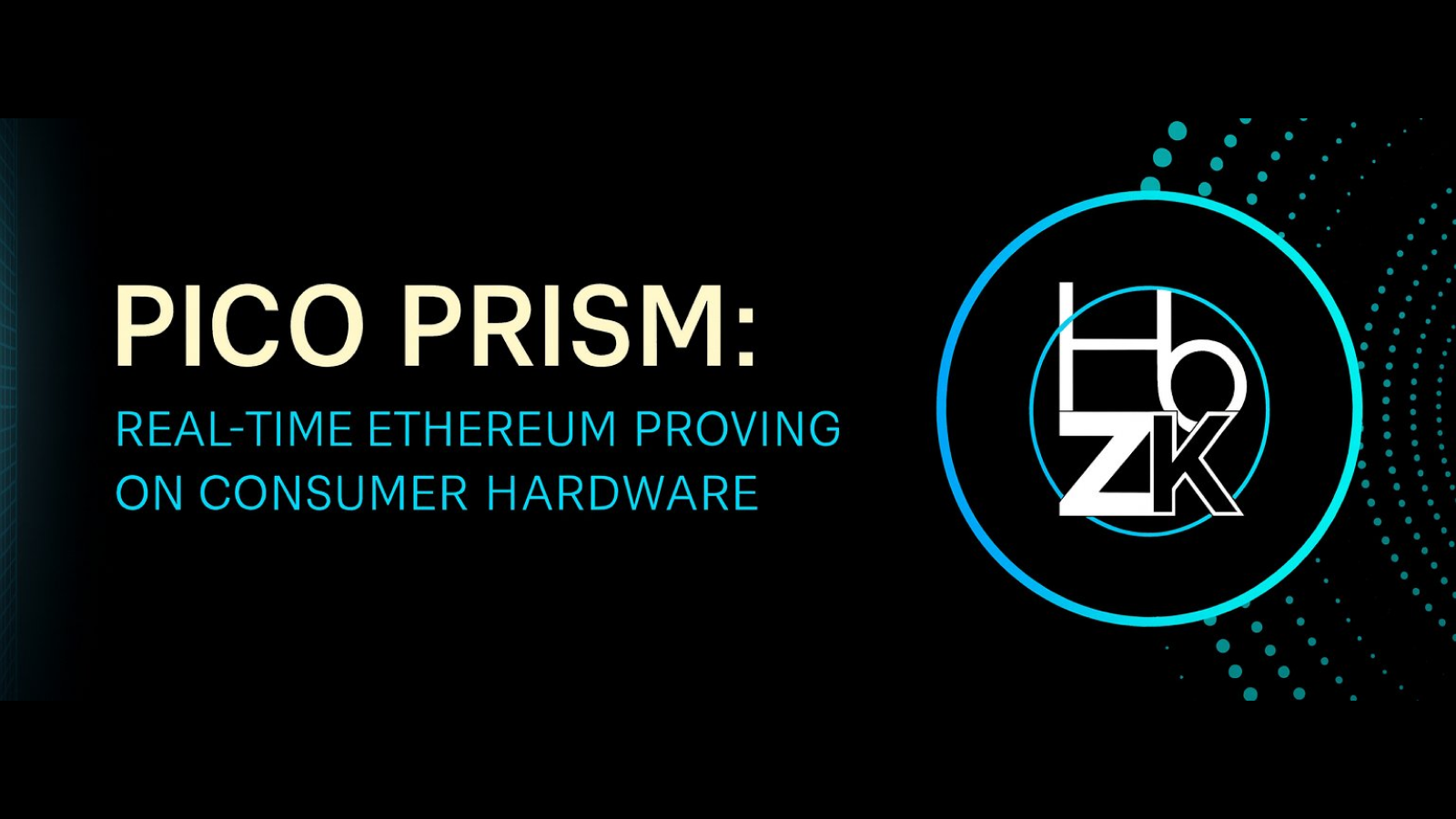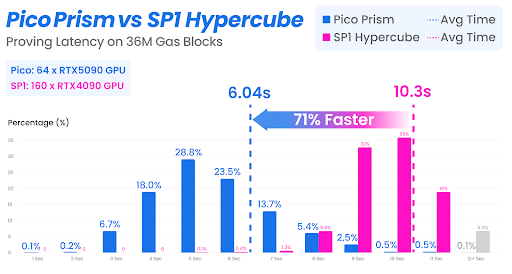
The pursuit of real-time proving for @Ethereum just took a giant leap forward. @brevis_zk has introduced Pico Prism, a distributed prover system capable of generating zero-knowledge proofs for Ethereum mainnet blocks in near real-time - using consumer-grade GPUs.
According to Brevis, Pico Prism successfully proved 99.6% of all Ethereum blocks produced on September 1, 2025, in under 12 seconds, and 96.8% within the @ethereumfndn's 10-second RTP standard. The average proving time was 6.9 seconds for 45-million gas limit blocks using 64 RTX 5090 GPUs.

In direct benchmarks, Pico Prism outperformed @SuccinctLabs's SP1 Hypercube by a factor of 3.4× in performance efficiency. For 36-million gas limit blocks, 98.9% were proven under 10 seconds, compared with 40.9% for SP1. The average proving time was 6.04 seconds versus 10.3 seconds, while hardware costs dropped by half - from $256,000 to $128,000.
“Progress toward real-time proving for Ethereum L1 is extraordinary. In just five months, proving performance leapt from 94% to 99.9% of L1 blocks under 12 seconds, while GPU requirements dropped from 160 RTX 4090s to 64 RTX 5090s”, said @drakefjustin, researcher at the Ethereum Foundation.
“zkVM diversity is booming - nine teams now race toward real-time proving. Real-time proving is Ethereum’s lightbulb moment.”

The performance gains come from a redesigned multi-GPU and multi-machine architecture. Pico Prism decomposes the proving pipeline into parallelized phases, allowing computation-heavy components to run concurrently across GPUs. This structure achieves near-linear acceleration as GPUs are added, while sustaining high utilization rates and efficient memory usage.
“Excited to see Brevis’s Pico Prism entering the ZK-EVM proving arena! An important step forward in ZK-EVM proving speed and diversity”, said @VitalikButerin, co-founder of Ethereum.
Brevis believes Pico Prism moves Ethereum closer to fully integrated zkVM-based validation at the L1 level. While the current system narrowly misses the Ethereum Foundation’s 99% sub-10-second target, the team expects to meet it in upcoming releases and aims to cut GPU requirements further. Future iterations target full RTP with fewer than 16 RTX 5090 GPUs.
Full binaries and benchmarks are available on GitHub.